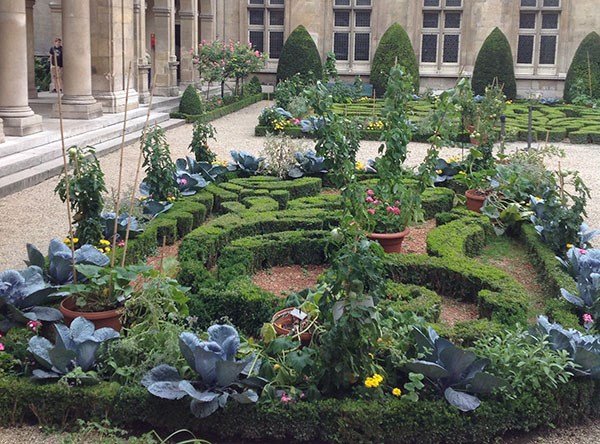Bonjour from Paris. Our travels this summer have taken us from the Haut Garonne region of France to the beaches of sunny Spain, and are winding up in one of my favourite cities in the world: Paris.
Paris has had one of the cooler rainiest summers on record and the gardens here are thick and lush as a result.
The thing I love about Paris and its green spaces, is that amidst the hustle and bustle of its urbanity, there are much loved pockets of green that emerge as almost an oasis. Gardens where you least expect them.
Yesterday we were visiting the Carnavalet museum of French history, nestled in two historic mansions in the Marais. Before you begin the tour you are treated to a walk through its inner courtyard, which dates back to the days when it was generally accepted that the rich were born to rule, and the rest of the people were meant to be ruled. The embodiment of that age, Louis XIV stands atop the stature in the center. But the real star of the show is the ornate and symmetrical potager (or kitchen garden) that graces old Louis on the ground floor.
Potagers are synonymous with France and range from a simple tangle of veg, to more of a formal parterre which grace the finest of chateaus.
In the potager, gardeners have been intermingling vegetables, fruit, flowers and herbs since medieval times.
Traditional potagers are very structured. Usually ringed with boxwood or privet hedges and sometimes using designs based on geometrical patterns.
Any pattern is possible, spiral, checkerboard, wagon wheel or even cubist.
A well-planed potager can have year-round visual appeal and can incorporate woody green shrubs and perennials amongst the vegetable plants.
The potager is a separate and distinct space away from the rest of a residential garden. It is estimated that 70 per cent of homes in France sport a kitchen garden.
What makes this different than the rows we plant at home is their adherence to beauty and aesthetic as well as functionality. These are high yield gardens that use the best techniques of succession planting.
A good potager design uses vertical elements too. These can be temporary (a stand of corn, a bean tepee, or Angelica plant) or permanent (berry bushes, a small apple tree, or hardscape elements like a large clay pot or arbour). It is just about introducing height and interest to an otherwise low growing affair
Check out some Google images of French kitchen gardens and take your vegetable plot to the next level.



